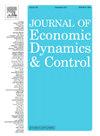不确定性下的共同投资博弈
IF 2.3
3区 经济学
Q2 ECONOMICS
引用次数: 0
摘要
在许多商业情况下,供应商和生产商的投资(“共同投资”)对于其中任何一方抓住商业机会都是必要的。例如,制造可靠的氢动力汽车需要质量更好的油箱。这两家公司中的一家可能更愿意投资,但另一家的谨慎态度推迟了共同投资。我们用一种经典的可处理的方法对供应链相互作用进行建模,以得出企业在共同投资时的净现值(npv),并确定其纳什均衡投资(时机)策略。当实力较弱公司的实物期权“资金充足”时,公司就会共同投资。这些业务情况可能会受到不断变化的市场环境的影响,特别是由于需求动态的变化或内生决策(例如供应商)进行研究和开发(R&;D)。我们研究了相关的模型扩展,证实了关键结果的鲁棒性。本文章由计算机程序翻译,如有差异,请以英文原文为准。
Coinvestment games under uncertainty
There are many business situations in which investments by a supplier and a producer (“coinvestments”) are both necessary for either of them to grasp a business opportunity. For instance, better quality tanks are needed to manufacture reliable hydrogen-powered vehicles. One of these two firms may be more willing to invest, but the cautionary attitude of the other delays the coinvestment. We model supply-chain interactions in a classical tractable way to derive the firms' net present values (NPVs) upon coinvestment and determine their Nash equilibrium investment (timing) strategies. Firms coinvest when the real option of the weaker firm is ‘deep in the money.’ These business situations are likely to be affected by evolving market circumstances, in particular due to changes in the demand dynamics or endogenous decision (by, say, the supplier) to conduct research and development (R&D). We investigate related model extensions, which confirm the robustness of our key result.
求助全文
通过发布文献求助,成功后即可免费获取论文全文。
去求助
来源期刊

Journal of Economic Dynamics & Control
ECONOMICS-
CiteScore
3.10
自引率
10.50%
发文量
199
期刊介绍:
The journal provides an outlet for publication of research concerning all theoretical and empirical aspects of economic dynamics and control as well as the development and use of computational methods in economics and finance. Contributions regarding computational methods may include, but are not restricted to, artificial intelligence, databases, decision support systems, genetic algorithms, modelling languages, neural networks, numerical algorithms for optimization, control and equilibria, parallel computing and qualitative reasoning.
 求助内容:
求助内容: 应助结果提醒方式:
应助结果提醒方式:


